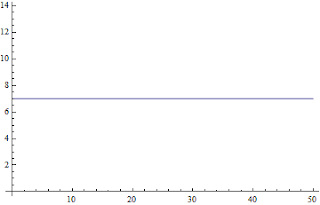First, Apply, Sequence, ReplaceAll
There come times in every Mathematica user's life when the all-pervasive List brackets get in the way. Sometimes it's easy to redesign the function to accept the arguments in a List. Here are other solutions.
First
For a single element enclosed by brackets, you can use First to extract the element. In this example, since all Mathematica arithmetic functions are Listable (they will automatically Map over a List) we specify that the argument must be an Integer so the function will fail.enclosed1={2};
Clear@function1;function1@x_Integer:=x^3;
function1@enclosed1
function1[{2}]
function1@First@enclosed1
8
Apply
First, see if you can use Apply @@ to apply a function to the contents of your List. Apply will replace the List head with your desired function and Evaluate it.In[107]:= Range@15
Out[107]= {1,2,3,4,5,6,7,8,9,10,11,12,13,14,15}
In[108]:= Plus@@%
Out[108]= 120
Here's a single filename that is unnecessarily surrounded by List brackets. It's a String, so we just Apply ToString to it. It then stands alone – no List brackets – but its Head is String.
FileNames[]
{TableFiredFibers-Control-CathodeOnly-0p644.txt}
ToString@@%141
TableFiredFibers-Control-CathodeOnly-0p644.txt
Head@%
String
FullForm@%%
"TableFiredFibers-Control-CathodeOnly-0p644.txt"
Sequence
Mathematica was designed as a list processing language in which the list is the fundamental data structure. Allan Newell's IPL (Information Processing Language) was the original prototype, after which John McCarthy coupled the list as a universal data structure with the lambda calculus and logic functions into the major programming language, LISP.We can Apply Sequence to a List to replace List as the container (the Head). Here are two examples, first to a single List, then to a List of Lists.
In[115]:= Sequence@@{0,4}
Out[115]= Sequence[0,4]
In[119]:= Sequence@@{{0,1,1},{0,2},{0,1,3},{0,4}}
Out[119]= Sequence[{0,1,1},{0,2},{0,1,3},{0,4}]
FileNameJoin is the safe way to assemble filepaths in Mathematica since it knows your operating system syntax. However FileNameJoin only accepts a single-level List as its argument. To feed it a nested List, use Sequence instead of List as the Head of the inner List.
In[350]:= twoPathElements={"webPages","index.html"};
In[351]:= FileNameJoin@{$HomeDirectory,twoPathElements}
Out[351]= FileNameJoin[{C:\Users\kwcarlso,{webPages,index.html}}]
Since it didn't see a List of Strings (filepath names) as the correct argument types, FileNameJoin returned the input. Using Sequence solves this.
In[352]:= twoPathElements=Sequence["webPages","index.html"];
In[353]:= FileNameJoin@{$HomeDirectory,twoPathElements}
Out[353]= C:\Users\kwcarlso\webPages\index.html
The context of one function I use to illustrate Sequence is worth mentioning (but skip this to get to more usages of Sequence). I have digitally sampled a curve from the literature (a paper by Holsheimer from 1999) in the graphing program Origin. In other words, you can import an image, in this case a graph for which Holsheimer doesn't give either the underlying data or an equation, and repeatedly click on it to harvest {x,y} values. We captured 163 sample points on the solid curve below, which is a vast improvement on the antiquated method of using a straightedge to pick up x and y values off the axes.
With that many sample points, finding the x value closest to the one desired is a reasonable alternative to fitting a curve and applying the fit equation to values you wish to interpolate or extrapolate.
So this is a function to find the nearest x value (a neuron axon diameter, fiberDiameter) to one for which we want to know the threshold as determined by Holsheimer (which is the y-value retrieved). The problem is Nearest returns values in List brackets, which don't match the un-bracketed x values in the List of data. Applying Sequence to the result of Nearest feeds the unbracketed value to Cases, which then performs the match.
Clear@diameterThreshold; diameterThreshold[fiberDiameter_, fiberThresholdSourceData_:holsheimerData1999] := Cases[fiberThresholdSourceData, {x_, y_} /; x == Sequence@@Nearest[fiberThresholdSourceData[[All, 1]], fiberDiameter] ]
So in sum this function says: Clear the function name (which I do habitually at the start of a function definition to prevent accidentally testing a previous version as I revise it). Then define it as the Cases in the source data file (fiberThresholdSourceData--default to the holsheimerData1999 file unless I specify another file) such that ( /; ) the x-value is Nearest to the fiberDiameter parameter I give it.
ReplaceAll
Here is a third way using rule patterns.In[128]:= {{0,1,1},{0,2},{0,1,3},{0,4}}/. List[a__] ->a
Out[128]= Sequence[{0,1,1},{0,2},{0,1,3},{0,4}]



















